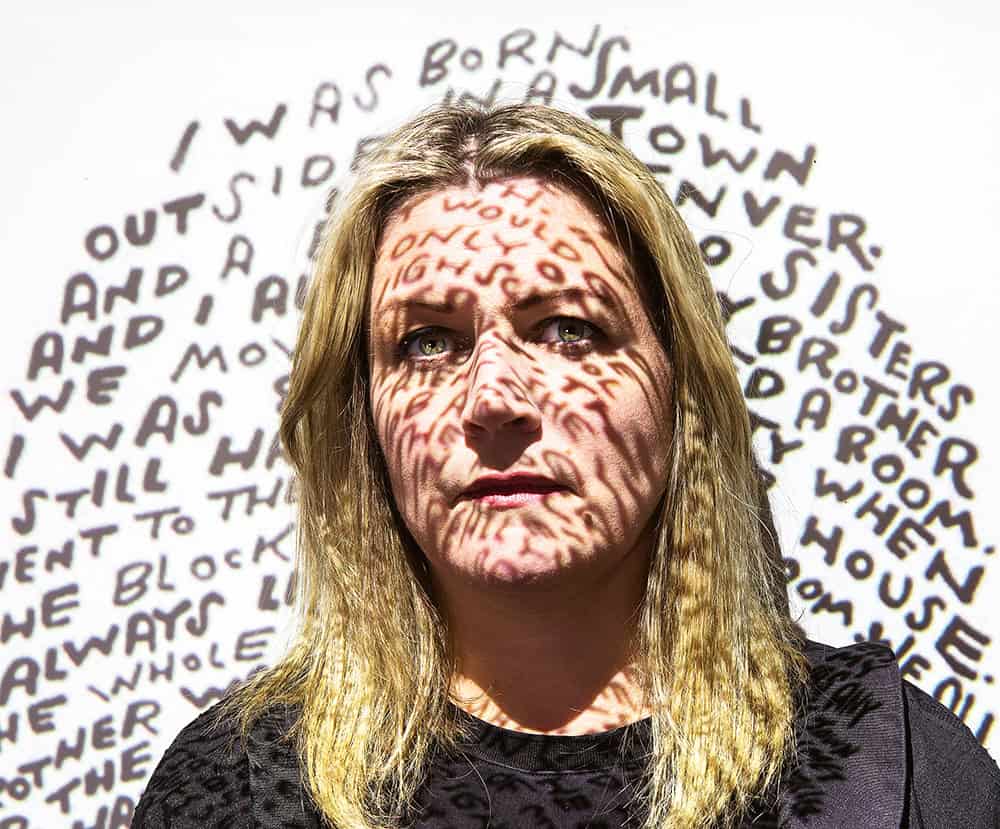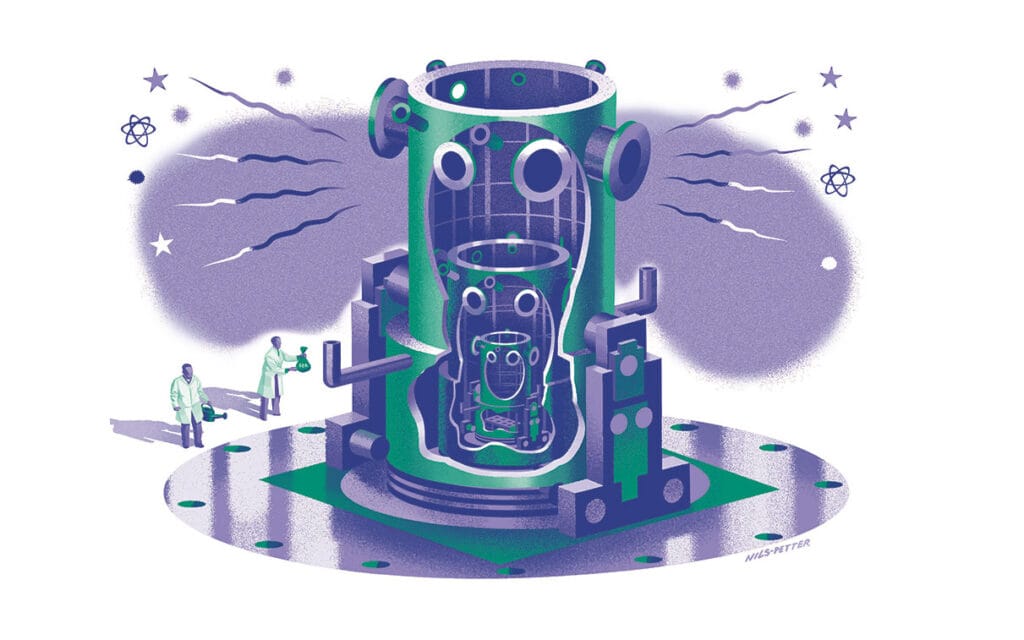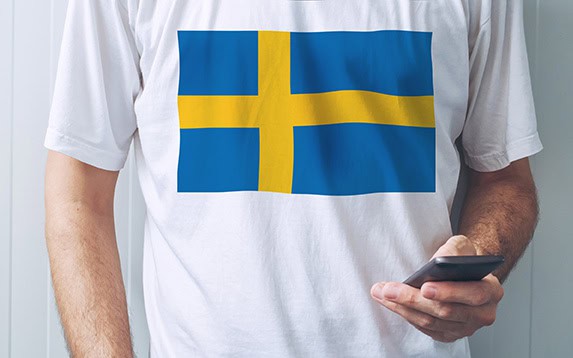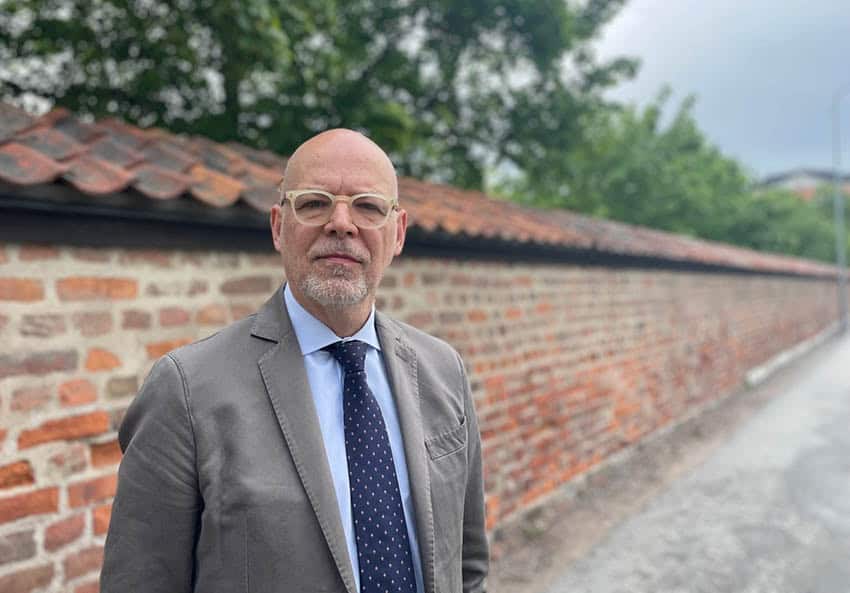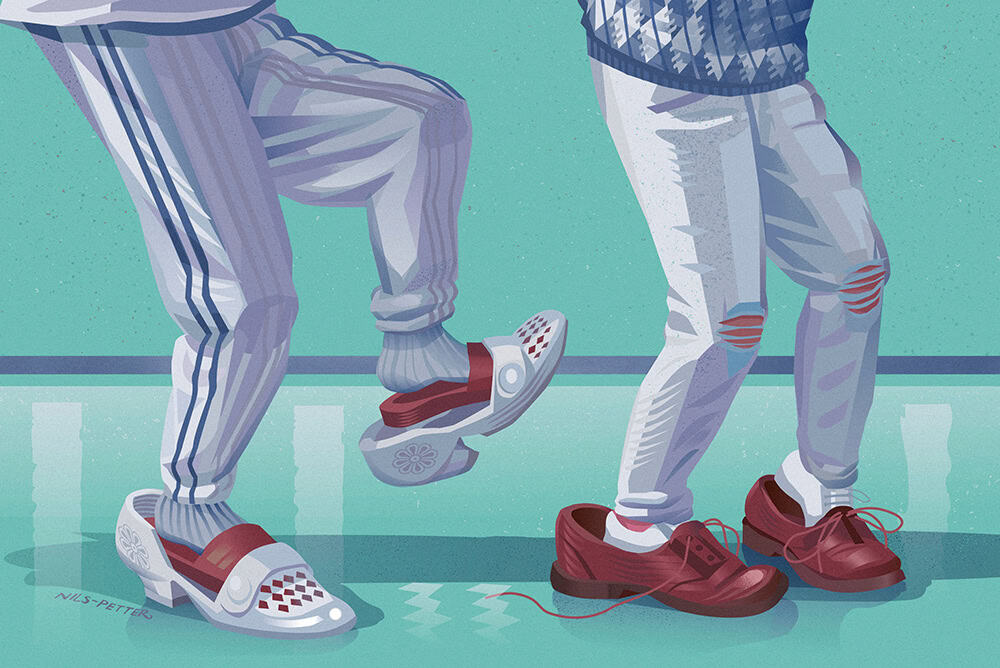“I knit, I unravel, I move fibres.”
Lotta Lundstedt follows up this sentence – not exactly a standard phrase in a doctoral thesis – with an argument about the parallels between a lengthy knitting project and Albert Camus’ essay The Myth of Sisyphus – which, incidentally, is described as ”rather incomprehensible”. Many readers would surely nod in agreement, a little discreetly, so that no one sees. She writes it boldly.
In short, Down to Earth: A Textile Study in the Aesthetics of Aversion is no ordinary product off the thesis production line. The tone is set in the abstract. Easily decoded paragraphs on method and results are conspicuous by their absence. Instead, it describes how society has begun to spin out of control at ever-increasing speed. We are always in a hurry and getting stressed out, constantly chasing new fashion trends, we overconsume and throw away.
“This thesis opposes these trends and rejects the urge to follow the masses.”
“That is the essence of my work,” says Lundstedt. “Fashion is very much about following each other, about believing that the choice of the herd is the right one. But sometimes you can think: what is the herd doing? And then you want to go in another direction.”
It is no coincidence that her abstract is more like a policy declaration or a philosophy of life.
“I have not written my thesis in the way they are usually written. So I don’t think my abstract needs to follow the usual structure either. I have not worked in that way with my research.”
She defended her thesis, an artistic research project, at the Swedish School of Textiles in Borås just before Christmas. But her doctoral studies began as long ago as 2006. A couple of years later she had a child, moved from Borås to Umeå, took parental leave and after a while started teaching at the Department of Creative Studies. Her doctoral studies were shelved for many years. But the time she spent at work developing her competence enabled her to write a licentiate thesis, which she completed in 2021. The Swedish School of Textiles and Umeå University then jointly funded her work on the doctoral thesis.
“I’ve thought a lot about stress, both in consumption and the fashion industry, and really acceleration culture in general. We also see it in academia, with pressure to publish and so on. So it seems appropriate that my thesis has been allowed to take its time.”
On a mild winter evening a couple of months after defending her thesis, the public is invited to see the six textile sub-projects described and analysed in Lundstedt’s thesis. There is a vernissage, bowls of crisps, happy smiles. The exhibition is taking place at UmArts, a research centre for architecture, design and art at Umeå University, housed in a building on the edge of the Arts Campus. The door opens more and more often as the appointed opening time approaches.
Soon, around fifty visitors have raised the noise level in the room considerably. A few children run around while men and women of different ages talk in small groups.
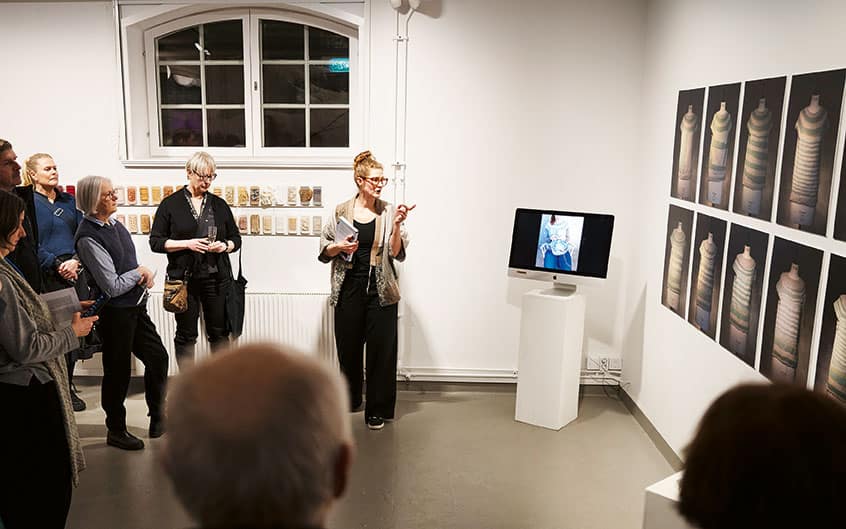
“Welcome!” says UmArts Director Ele Carpenter, holding the microphone firmly. Everyone stops talking and Lotta Lundstedt begins to speak about her projects. There, she points, are the hundred frames that look like mobile phones, but with the displays replaced by small weaves, in an attempt to show how digital stress and frenzy can be replaced by something more lasting and thoughtful.
There, on the short wall, are pictures of the eternity jumper she unravelled and re-knitted ten times over the course of a year. She often wore it, half-finished, while the next version of the jumper was being created. The audience watches and listens. A trio of girls arrive late, the door thuds shut, no one looks in their direction.
Lotta Lundstedt moves around the room. Here are the seven shirts she sewed by hand, plant-dyed and then wore as part of the project, spending a whole week wearing each shirt, a total of 49 days. And here is the string she crocheted into a kind of textile trail, while slowly moving forward in a forest up on a mountain. For a year, she kept coming back to continue crocheting along the path of handicraft, nature, animals and ancestors.
“And so…” She loses her thread; tries to find what she was going to say. The exhibition room is silent. A few seconds pass. Everyone is waiting. “But waiting,” she says, smiling, “is also an important part of my thesis.”
The audience laughs.
“Waiting for plants to grow, for colours to appear in the textiles, and waiting for ideas… I simply started to think about who I was following if I wasn’t following anyone, wasn’t following a trend.”
A few days later, we meet in Lotta Lundstedt’s office in the Lärarhuset building on the Umeå campus. The Department of Creative Studies is on the fourth floor. The window offers a view of tall pine trees and red-brown brick houses just outside the campus. The snow sparkles in the morning light.
She was born and mostly raised in Umeå. She took an early interest in clothes. Right from primary school, she liked to coordinate the colours on her socks and sweaters.
“I thought those little details were really important. But it had nothing to do with fashion. I think I wanted to be a bit different, not necessarily blend in.”
Her bookshelf displays book On the bookshelf along the wall are titles such as The Art of Knitting, Fashion & Sustainability and Modefabriken (‘Fashion Factory’). It was the desire to create and design clothes that led her to the fashion design programme at the Swedish School of Textiles in Borås. There, she also acquired the knowledge that gave her an increasingly critical view of the fashion industry.
In the second year of the programme, she was to take part in a competition where representatives of the clothes retailer Kappahl sat on the jury. It was 2002, and Kappahl had recently been in the news for designing adult clothes for children – bikinis for little girls.
“My reaction was to turn that around and make children’s clothes for adults instead. The critical aspect was already part of me.”
She thinks the exhibition at UmArts went well. Her presentation was similar to the one she held when she defended her thesis, although that presentation was obviously longer and more detailed. She thinks that the opportunity to exhibit and discuss objects that have been part of the research process is what most clearly distinguishes doctoral theses in artistic research from more ”traditional” events.
“You go through the theses in the same way, so the actual defence part is not very different.”
Last autumn, a Swedish Television documentary called Fallet Bogdan, (‘The Bogdan Case’), sparked a debate on artistic research. It contributes neither to science nor to the art world, say critics, who see risks in the practice of art being subject to more and more academic regulations. Resources would be more usefully spent on the liberal arts, they believe. Proponents, on the other hand, argue that artistic research provides new perspectives and methods that are important for both artistic development and education.
The Swedish Research Council, which has granted more than SEK 50 million to around ten projects in the field over the next five years, writes on its website that artistic research can contribute to ”increased knowledge about major societal issues”.
Lotta Lundstedt does not want to get involved in that debate. She believes that research is needed in all subject areas.
“Scientific research is very much about measuring, comparing and making precise studies. Artistic research is more about exploring expression, what people do and how they relate to things. Why shouldn’t we be able to explore other ways of looking at and experiencing the world through different forms of artistic expression?”
Of the sub-projects included in her thesis – of which there are many photos – she found ’Reknit’ particularly rewarding. That was the ‘eternity sweater’ that she knitted, only to unravel and knit again, using the same yarn.
“There was something in that that set me off. The project describes how this reluctance can be made very visible.”
She has thought a lot about how reusing has come to be seen as the only solution to today’s overconsumption. At the same time, reusing, upcycling and second hand have also become a trend that many are trying to monetise. She wanted to take circularity to the extreme by not adding anything new to the creation of new garments.
Over the course of a year, she knitted ten different versions of the same jumper, using only the yarn from the first one. When one version was finished, she immediately began to unravel it to start on the next one.
“It was like a transformation into the next jumper. It was like I was taking one garment off me while creating the other. And then I put it on. And then the same thing over and over again.”
The aversion in the title of her thesis refers to resistance on several levels, to everything from digital stress to unthinking consumption. Lundstedt describes working on her textile projects as interesting in different ways, but also time-consuming, sometimes deliberately boring and downright repulsive. She wanted to expose herself to these feelings as a way of slowing down the fast pace of modern life and within herself. She also believes that the projects have changed her. She says she has always been fast, efficient, almost restless.
Now FOMO, the fear of missing out, has started to give way to JOMO, the joy of missing out.
“Before, I wanted to be involved in lots of things, do lots of things socially, be out doing things all the time. Now I spend much more time on handicrafts and being with my family.”
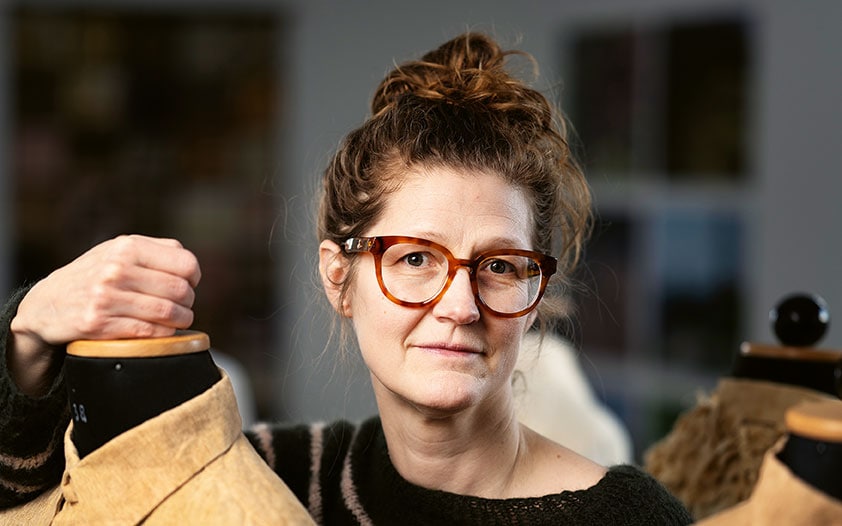
She already has new research projects planned. Growing flax has a central role in one. She finds that insights from her thesis work are useful in her teaching, as she encourages students to reflect on what they are doing and ask critical questions about fashion and more.
“I also think that my thesis, and the way it is written, can inspire people and show them alternative ways of relating to overconsumption of textiles, environmental problems, stress and how everything keeps accelerating.”
Every doctoral thesis is unique in its own way. Lotta Lundstedt’s contribution to the genre offers resistance to established forms in everything from its abstract to its overall structure. But she would not call it innovative.
“I find it hard to say what is innovative. But I don’t think many people have done what I did before. It’s perhaps not very common.”
Lotta Lundstedt
Lotta Lundstedt is 50 years old, lives in Umeå and has been a senior lecturer on the teacher training programme at the Department of Creative Studies at Umeå University since 2017.
Handicrafts, cultivation and plant dyeing are major interests, as well as outdoor activities such as walking in the countryside and skiing, both cross-country and downhill
In her licentiate thesis, Repetition Recurrence Return (2021), Lotta Lundstedt examines the relationship between humans, nature and textiles using materials and methods in textile projects, as well as thoughts and theories from artists, philosophers and researchers.
Both that and her doctoral thesis, Down to Earth: A Textile Study in the Aesthetics of Aversion (2024), can be downloaded here.

